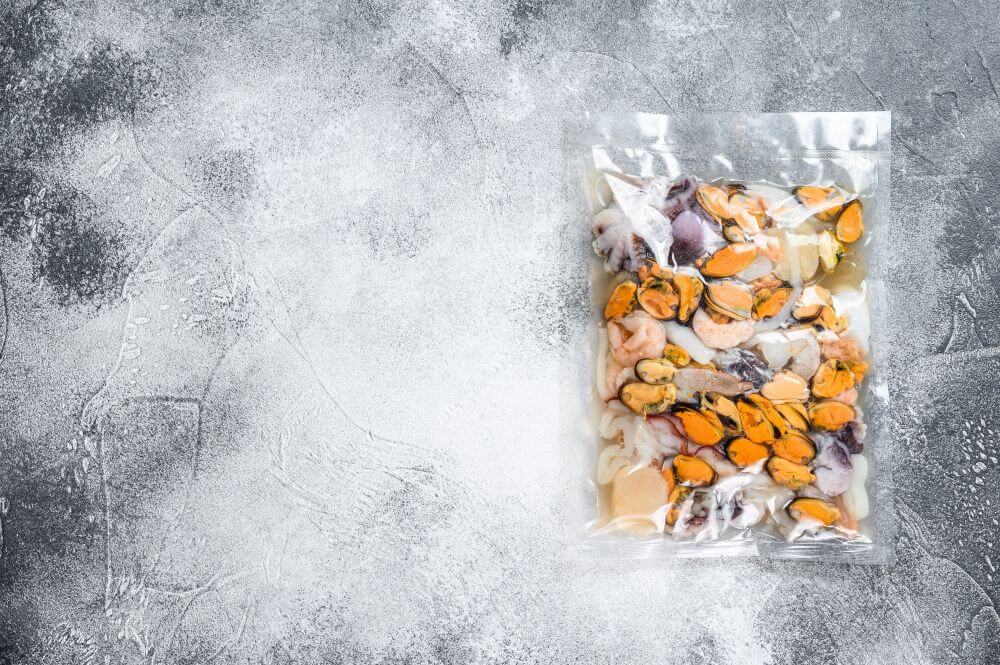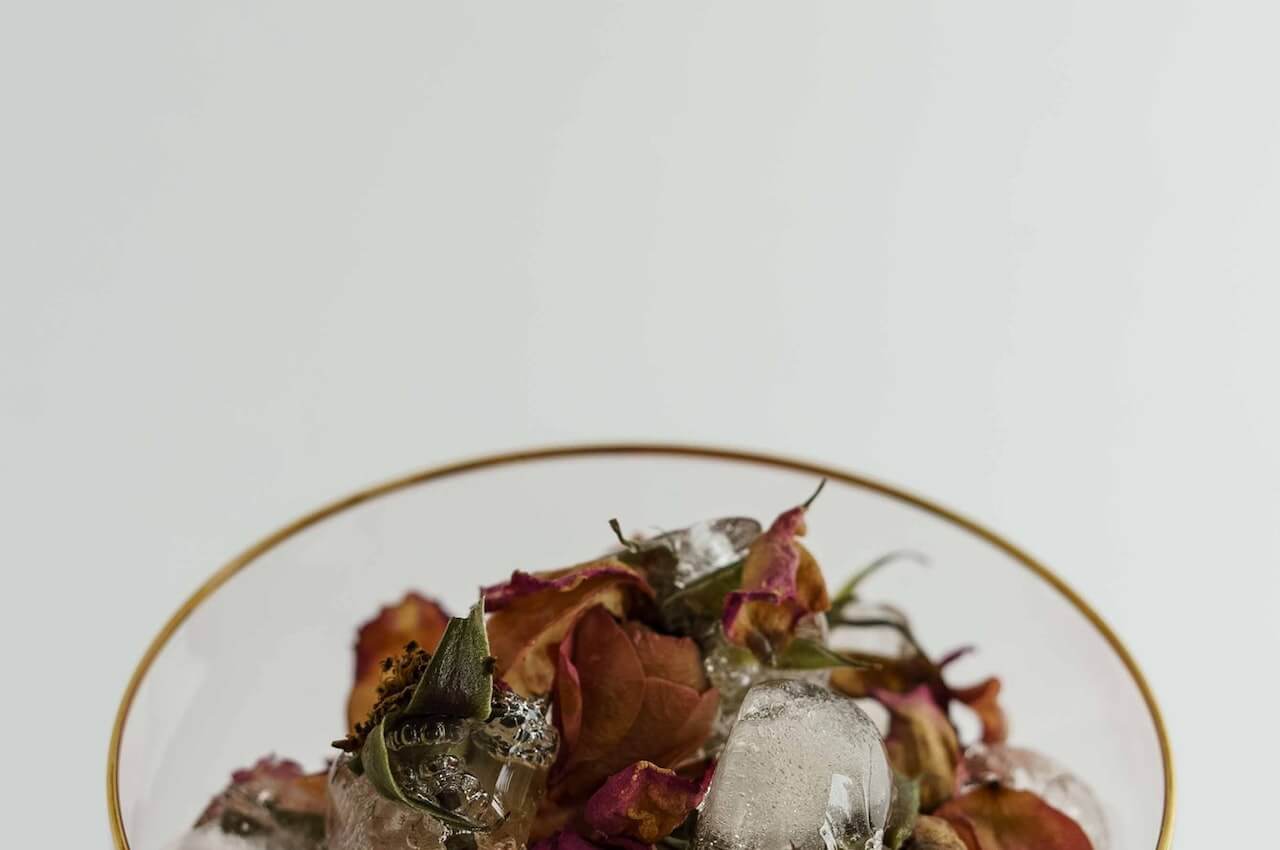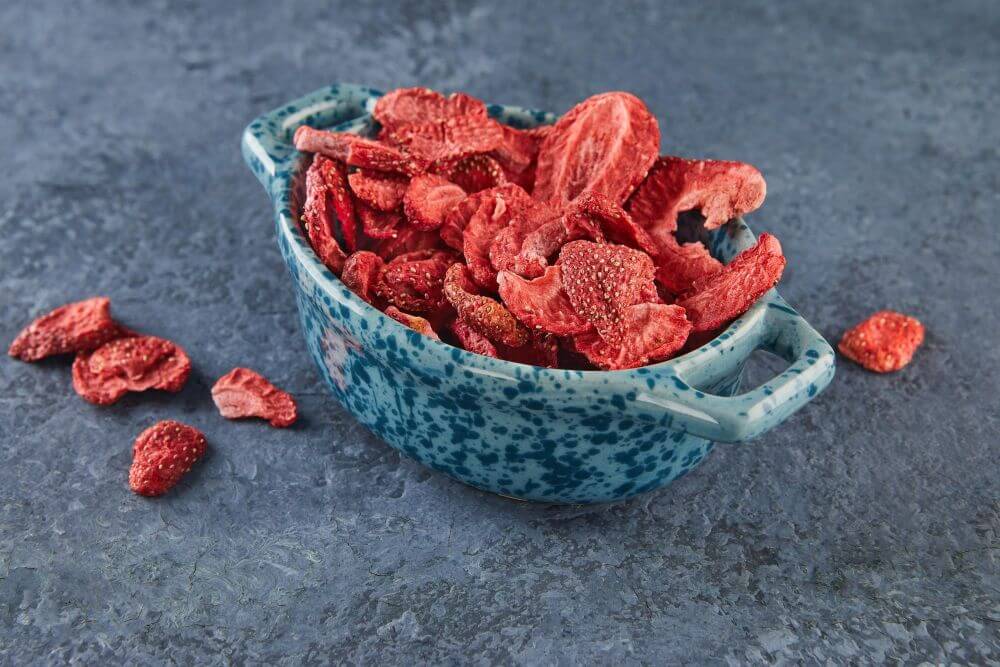Freeze-dried turkey heads are preserved turkey heads that have undergone a process to remove the water content, resulting in a lightweight and durable specimen. Freeze-drying is commonly used to preserve animal remains for scientific, educational, or decorative purposes.
By removing moisture from the turkey heads, freeze-drying helps prevent decomposition and provides a long-lasting and realistic display item. These preserved turkey heads can be used for various purposes, such as educational exhibits, artistic displays, or as unique collectibles. They offer a detailed and lifelike representation of the turkey’s features, making them popular among taxidermists, natural history museums, or individuals interested in nature and wildlife.
Freeze-dried turkey heads provide a visually stunning and sustainable alternative to traditional taxidermy methods.
Exploring the Origins of Freeze-Dried Taxidermy
Delve into the fascinating origins of freeze-dried taxidermy to uncover the secrets behind preserving and showcasing freeze-dried turkey heads. Explore this unique technique of preserving wildlife in a lifelike form. Discover the artistry and science behind freeze-dried taxidermy.
Freeze-Dried Turkey Heads
If you’re unfamiliar with freeze-dried taxidermy, you may wonder how freeze-dried turkey heads existed. In this section, we will explore the historical background of freeze-drying in taxidermy and delve into the introduction of freeze-dried turkey heads.
Historical Background of Freeze-Drying in Taxidermy
- In the early 20th century, taxidermists sought ways to preserve animals more realistically.
- Traditional taxidermy methods, such as stuffing with sawdust or preserving with chemicals, often resulted in distorted appearances and eventual decay.
- Scientists and taxidermists began experimenting with freeze-drying techniques borrowed from the food preservation industry.
- Freeze-drying, or lyophilization, involves removing moisture from an object by freezing it and then subjecting it to a vacuum, causing ice to sublime directly into water vapor.
- This process helps retain the specimen’s structure and shape, providing a lifelike appearance compared to traditional taxidermy methods.
Introduction of Freeze-Dried Turkey Heads
- Freeze-dried turkey heads are a unique and innovative approach to taxidermy.
- With the freeze-drying method, the head of the turkey can be preserved in its most natural form, maintaining intricate details such as feathers, facial features, and even expressions.
- Freeze drying eliminates the need for harsh chemicals and prevents tissue shrinkage or distortion.
- This technique has gained popularity among hunters, bird enthusiasts, and collectors as it allows for a realistic display of the turkey’s head without the hassle of conventional taxidermy methods.
- Freeze-dried turkey heads serve as exquisite mementos, offering a lasting tribute to a successful hunt or a memorable encounter with these magnificent birds.
Freeze-drying in taxidermy emerged as a revolutionary approach to preserve animals with exceptional realism. Introduced to the world of taxidermy, freeze-dried turkey heads capture the essence of these magnificent birds, creating aesthetically striking displays that stand the test of time.
Understanding The Process Of Freeze-Drying
Freeze-dried turkey heads undergo a meticulous process known as freeze-drying, where moisture is removed after freezing to preserve the head’s appearance and qualities. The method helps maintain the integrity of the turkey head, allowing it to be displayed for educational or artistic purposes.
Freeze-drying is a fascinating process that involves removing moisture from organic material while preserving its structure and integrity. When it comes to freeze-dried turkey heads, this method ensures that the heads are dehydrated and preserved in a unique and durable state.
Explanation Of The Freeze-Drying Method
Freeze-drying, or lyophilization, is a scientific process to remove water from perishable substances without damaging their natural composition. This method is commonly used to preserve food, pharmaceuticals, and biological specimens like turkey heads. Here’s how freeze-drying works:
- Freezing: The first step involves freezing the turkey heads to extremely low temperatures. This freezing process solidifies the water within the heads, converting it into ice crystals.
- Vacuum chamber: Once the heads are frozen, they are placed in a vacuum chamber. In this chamber, the pressure is reduced to create a vacuum, causing the ice crystals to sublimate. Sublimation is when solid ice turns directly into water vapor without passing through the liquid phase.
- Drying: As the ice crystals sublimate, the water vapor is drawn out of the vacuum chamber. This step reduces the moisture content within the turkey heads, gradually drying them out.
- Secondary drying: To ensure complete moisture removal, the heads are subjected to a secondary drying process. This step involves slightly increasing the temperature within the vacuum chamber to promote further sublimation and eliminate any remaining moisture.
- Final preservation: Once the turkey heads are thoroughly dried, they are sealed in airtight packaging to prevent rehydration. The heads undergo a final quality check before being ready for various purposes like ornamental displays, educational specimens, or artistic creations.

Step-By-Step Guide To Freeze-Drying Turkey Heads
- Preparation: Carefully select turkey heads that are suitable for freeze-drying. The heads should be clean, intact, and free from any damage or decay.
- Freezing: For several hours, place the turkey heads in a freezer set to a temperature below freezing (-18°c or 0°f). Make sure the heads are evenly spaced and not touching each other.
- Vacuum chamber setup: Set up the equipment according to the manufacturer’s instructions. Ensure the chamber is clean and contaminant-free before placing the frozen turkey heads.
- Placing heads in the chamber: Gently place the frozen turkey heads in the vacuum chamber, properly positioned and spaced apart.
- Start the vacuum process: Activate the vacuum pump to reduce the pressure inside the chamber. This will initiate the sublimation process, where the ice within the turkey heads will transform into water vapor.
- Monitor the process: Regularly check the vacuum chamber to ensure the proper functioning of the equipment. Maintaining the required pressure and temperature levels throughout the process is crucial.
- Secondary drying: After the sublimation process is complete, introduce a controlled temperature increase to remove any remaining moisture from the turkey heads.
- Quality check: Once the heads are deemed completely dry, carefully inspect them to ensure their integrity and quality. Discard any heads that do not meet the desired standards.
- Packaging: Seal the freeze-dried turkey heads in airtight containers or packaging material to prevent rehydration. Store them in a cool, dry place away from moisture and direct sunlight.
- Utilize the freeze-dried heads: Freeze-dried turkey heads can be used for educational purposes, artistic creations, or as unique decorative items. Ensure proper care and handling to maintain their longevity.
By understanding the freeze-drying process and following the step-by-step guide, you can explore the fascinating world of freeze-dried turkey heads. Immerse yourself in this intricate preservation method and discover the captivating possibilities it offers for innovative applications.
Unveiling The Intricate Details Of Freeze-Dried Turkey Heads
Explore the intricate details behind freeze-dried turkey heads in this captivating study. Discover the mesmerizing preservation process and unravel the mysteries of these unique specimens.
Freeze-dried turkey heads: unveiling the intricate details of freeze-dried turkey heads
Turkey’s heads may seem unusual, but freeze-drying these fascinating creatures has become a popular preservation method. In this blog post, we will delve into the world of freeze-dried turkey heads, exploring how their natural features are preserved and how they retain a lifelike appearance with minimal alterations.
Preserving Natural Features Through Freeze-Drying
How is it possible to preserve the natural features of a turkey head through freeze-drying? Let’s take a closer look:
- Freeze-drying is a process that involves removing moisture from an object while preserving its structure and form.
- By subjecting turkey heads to sub-zero temperatures, the moisture within them is frozen solid.
- The frozen moisture is then vaporized by applying a vacuum, resulting in sublimation.
- Throughout the freeze-drying process, the intricate details of the turkey heads, such as the shape of the beak, comb, and wattle, are meticulously preserved.
- This preservation method ensures that the natural features of the turkey heads remain intact, allowing them to captivate viewers with their authenticity.
Retaining Lifelike Appearance With Minimal Alterations
When freeze-drying turkey heads, they must retain their lifelike appearance with minimal alterations. Here’s how it is achieved:
- The turkey heads are carefully handled following freeze-drying to maintain their lifelike shapes.
- The removal of moisture during freeze-drying eliminates the possibility of decomposition over time, preventing any decay or rot that may alter their appearance.
- The preservation process also helps to prevent the fading of colors, maximizing the vividness and richness of the turkey heads’ natural hues.
- To enhance the lifelike appearance further, preservation specialists may utilize careful paint touch-ups to restore any faded or damaged areas of the heads to their original splendor.
- By preserving the intricate details and colors of the turkey heads, freeze-drying allows them to serve as awe-inspiring decorative pieces or educational tools without compromising their lifelike qualities.
Freeze-drying turkey heads is a meticulous process that enables preserving natural features while retaining a lifelike appearance with minimal alterations. This unique preservation method allows these fascinating creatures to be admired and appreciated for their beauty and intricate details.
Whether displayed in museums or private collections, freeze-dried turkey heads offer a remarkable opportunity to observe the wonders of nature up close.
Applications And Benefits Of Freeze-Dried Turkey Heads
Discover the versatile applications and numerous benefits of freeze-dried turkey heads. These unique products offer a natural, long-lasting solution for educational purposes, artistic endeavors, and scientific research.
Freeze-Dried Turkey Heads: Applications And Benefits
Freeze-dried taxidermy is a fascinating practice that finds its most unique application in preserving turkey heads. These freeze-dried turkey heads have a range of applications and benefits, from art and education to wildlife conservation and research. We will explore how freeze-dried turkey heads are utilized in different fields and the positive contributions they make.
Utilization Of Freeze-Dried Taxidermy In Art And Education:
- Exhibitions: Freeze-dried turkey heads are often showcased in art exhibitions for their aesthetic value and uniqueness, captivating viewers with their lifelike appearance.
- Educational displays: They are commonly used as educational tools in museums, nature centers, and classrooms to provide a hands-on learning experience about the anatomy and intricacies of turkeys.
- Artistic creations: Many artists find inspiration in these freeze-dried turkey heads to create stunning and thought-provoking artwork. They offer a distinct medium for artists to explore themes such as nature, life, and preservation.
Contribution To Wildlife Conservation And Research:
- Study of anatomy: Freeze-dried turkey heads are excellent resources for studying the anatomy of turkeys, allowing researchers to better understand their physical characteristics and adaptations.
- Species identification: Researchers can use freeze-dried turkey heads to identify various turkey species accurately. This is crucial for conservation efforts as it aids in monitoring population trends and assessing the health of turkey populations.
- Educational resources: Freeze-dried turkey heads can be used as educational tools for the public to raise awareness about the importance of conserving and protecting turkey species.
- Ethical alternative: Freeze-dried taxidermy offers an ethical alternative to traditional taxidermy methods, which involve killing animals solely for display purposes. Wildlife conservation efforts are supported by minimizing harm to living animals by utilizing freeze-dried turkey heads instead.
Freeze-dried turkey heads have emerged as valuable assets in multiple domains. From their applications in art and education to their contributions to wildlife conservation and research, these preserved heads provide unique opportunities for learning, creativity, and promoting the preservation of turkey species.
Their lifelike appearance and ethical nature make them captivating and educational assets for enthusiasts and professionals.
Read Similar Post:
What is so Special about Freeze-Dried Candy?
11 Fascinating Things About Freeze-Dried Beets
The Savory Powerhouse for Packed Nutrition of Freeze-Dried Turkey Necks
The Future of Freeze-Dried Taxidermy
Discover the future of freeze-dried taxidermy with freeze-dried turkey heads, offering a unique and lifelike preservation method for a lasting tribute to your hunting trophies. Experience the beauty of these preserved specimens in a visually captivating and long-lasting way.
As technology continues to advance, freeze-dried taxidermy is set to revolutionize the industry. The future holds several exciting possibilities for this unique preservation method, from innovative techniques to increased demand and usage. In this section, we will explore the innovations and technological advances in freeze-drying and make predictions for the growing demand and usage.
Innovations And Technological Advances In Freeze-Drying
- Cryogenic freeze-drying: Utilizing extremely low temperatures, cryogenic freeze-drying preserves animal specimens with exceptional quality, minimizing tissue shrinkage and maintaining lifelike forms.
- Advanced preservation solutions: Researchers are developing new chemical solutions that enhance the freeze-drying process, resulting in improved color retention and overall appearance of the taxidermy specimens.
- 3d scanning and printing: The integration of 3d scanning and printing technologies allows for precise replication of animal forms, ensuring accurate and realistic representations of the original specimens.
- Virtual reality showrooms: With the help of virtual reality, taxidermy enthusiasts can now explore realistic museum-like showrooms, providing an interactive and immersive experience from the comfort of their homes.
Predictions For The Growing Demand And Usage
- Increased popularity among collectors: As freeze-dried taxidermy becomes more accessible, collectors are expected to embrace this unique preservation method, fueling the demand for rare and exotic specimens.
- Eco-friendly alternative: With a growing focus on sustainability and ethical practices, freeze-dried taxidermy offers an eco-friendly alternative to traditional taxidermy methods that involve harmful chemicals.
- Medical and education applications: Freeze-dried taxidermy specimens have valuable applications in medical research, educational institutions, and veterinary training, providing hands-on learning experiences without the need for live animals.
- Emotional keepsakes: Freeze-dried taxidermy allows pet owners to memorialize their beloved companions, offering a unique and lifelike representation that brings solace and is a lasting memento.
The future of freeze-dried taxidermy holds great promise with innovations such as cryogenic freeze-drying, advanced preservation solutions, 3d scanning and printing, and virtual reality showrooms. As demand grows, this preservation method will continue to gain popularity, driven by collectors, the desire for eco-friendly alternatives, and its diverse applications in various fields.
Freeze-dried taxidermy is not just a preservation technique but an art form that celebrates nature’s beauty.
Frequently Asked Questions (FAQs)
How Are Freeze-Dried Turkey Heads Made?
Freeze-dried turkey heads are made by rapidly freezing them and then subjecting them to a vacuum to remove moisture.
Why Would Someone Want To Buy Freeze-Dried Turkey Heads?
For educational purposes, taxidermy projects, or as unique Halloween decorations, freeze-dried turkey heads offer a fascinating and distinctive addition.
Can Freeze-Dried Turkey Heads Be Rehydrated?
No, freeze-dried turkey heads cannot be rehydrated. The freeze-drying process preserves the heads while removing moisture, preventing rehydration.
Are Freeze-Dried Turkey Heads Ethically Sourced?
Yes, freeze-dried turkey heads are ethically sourced. No turkeys are harmed solely to produce freeze-dried heads.
Final Words
Freeze-dried turkey heads offer a unique and intriguing way to explore the wonders of nature and the art of preservation. These meticulously preserved heads captivate the attention of nature enthusiasts and art collectors and provide valuable educational opportunities for students and researchers.
With their lifelike appearance and long-lasting durability, freeze-dried turkey heads can serve as educational tools, museum exhibits, or even conversation starters in your home. Whether you are admiring their intricate details, studying their anatomy, or simply appreciating the beauty of nature in a new and unexpected form, freeze-dried turkey heads are a fascinating addition to any collection or display.
So, if you want to step outside the conventional and bring a touch of the extraordinary into your world, consider freeze-dried turkey heads a distinctive and unforgettable addition to your life.









